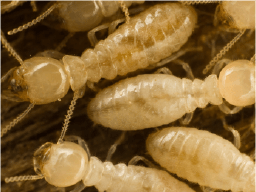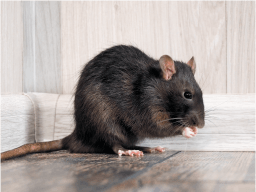What Do Japanese Beetles Eat?
Need to get rid of beetles? Read on to learn the answers to all of your important questions. Need help? Call our professionals today to get started.
Schedule Today!Japanese Beetle Diets
The Japanese Beetle is a notorious pest of many species of plants. They are a scourge to about 300 species of trees and bushes including rose bushes, grapes and grape vines, raspberries, birch trees, maple trees and crape myrtles. This is due to the fact that Japanese beetles are not native to North America, instead hailing from Japan where it has plenty of natural predators. In North America, however, there are no natural predators and as a result, Japanese beetles have been left unchecked, causing a lot of destruction in orchards and home gardens.
What Do Japanese Beetles Look Like?
Japanese beetles are about 15 millimeters in length and 10 millimeters in width. Japanese beetles are perhaps also best known for their characteristically beautiful colors: their hard wing case is iridescent copper and their heads are brilliant metallic green.
What Do Japanese Beetles Eat?
In addition to the 300 species of plants that Japanese beetles are known to eat, these beetles will also enjoy overripe or damaged fruit, flowers and leaves. Japanese beetles commonly eat in groups, beginning at the top of a tree or plant and working their way down to the bottom. They prefer plants that are in direct sunlight and are most active on warm, sunny days.
On foliage, an adult Japanese beetle will eat the upper surface of the leaf, chewing out the tissue between the veins of the leaf. This leaves behind the Japanese beetle’s characteristic signature of creating trees and plants covered in leaves with only a lace-like or skeletonized appearance. In areas that have been hit hard by Japanese beetle infestations, it is said that the trees look as though they have been scorched by fire.
Japanese Beetle Grubs
Female Japanese beetles will finish eating in the afternoon and then move to the ground where they burrow 2 to 3 inches into the soil to lay their eggs. These eggs then spend the winter as white grubs, feeding on the roots of turfgrasses and vegetable seedlings. Brown or even dead patches of lawn emerge where the grubs have been feeding.
Since both grubs and adults can cause damage and in different ways, controlling Japanese beetle populations on your own can be difficult and overwhelming. To protect your lawn and garden from the devastation that Japanese beetles can cause, call a pest professional to fully eliminate your Japanese beetle infestation.
Find A Pest Specialist For Beetle Control
If you are concerned about beetle control for your home, please give us a call or fill out the form on this page. PestControlExperts.com is a team of experts who are highly qualified to provide the best recommendations for you and your home, no matter which part of the United States you live in.
Call 855-891-5410














